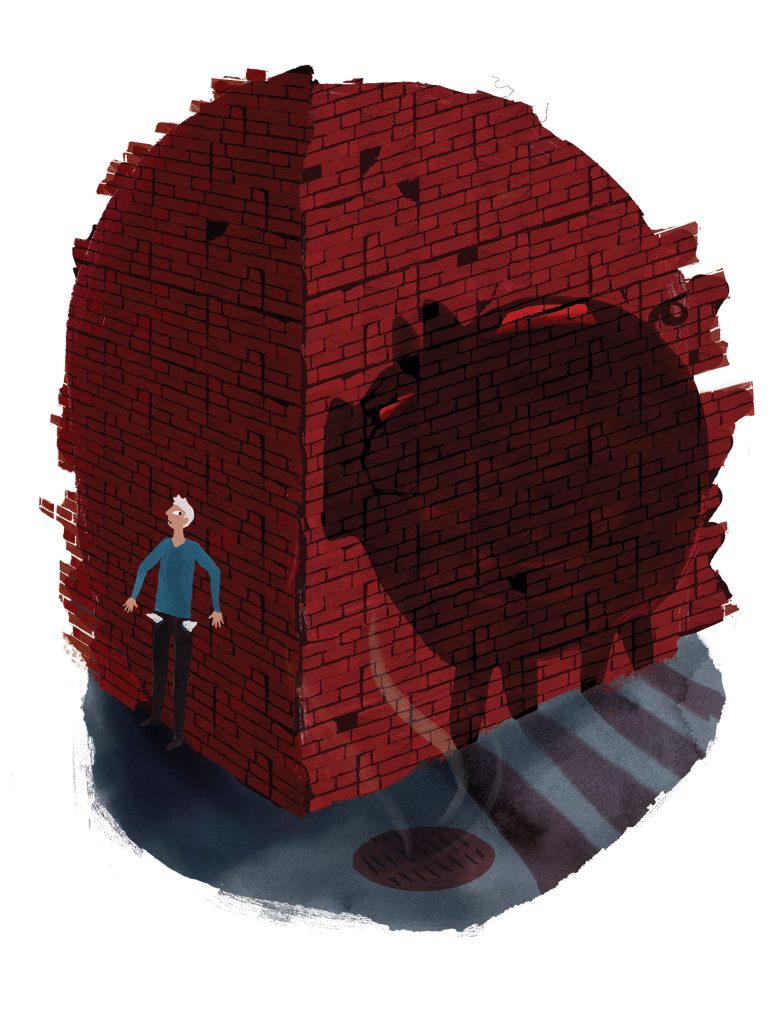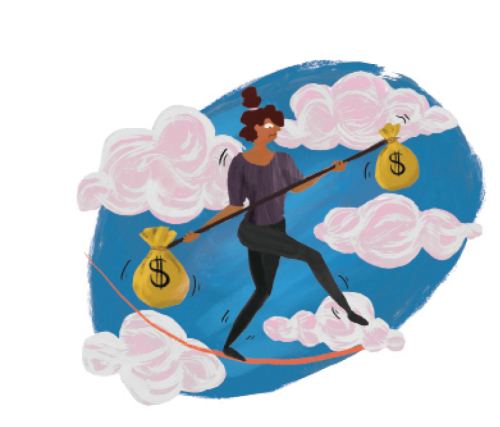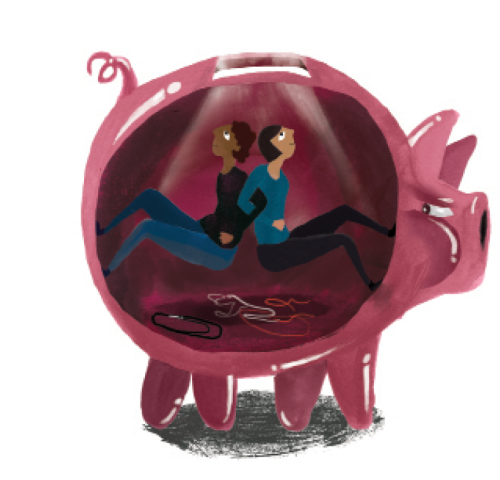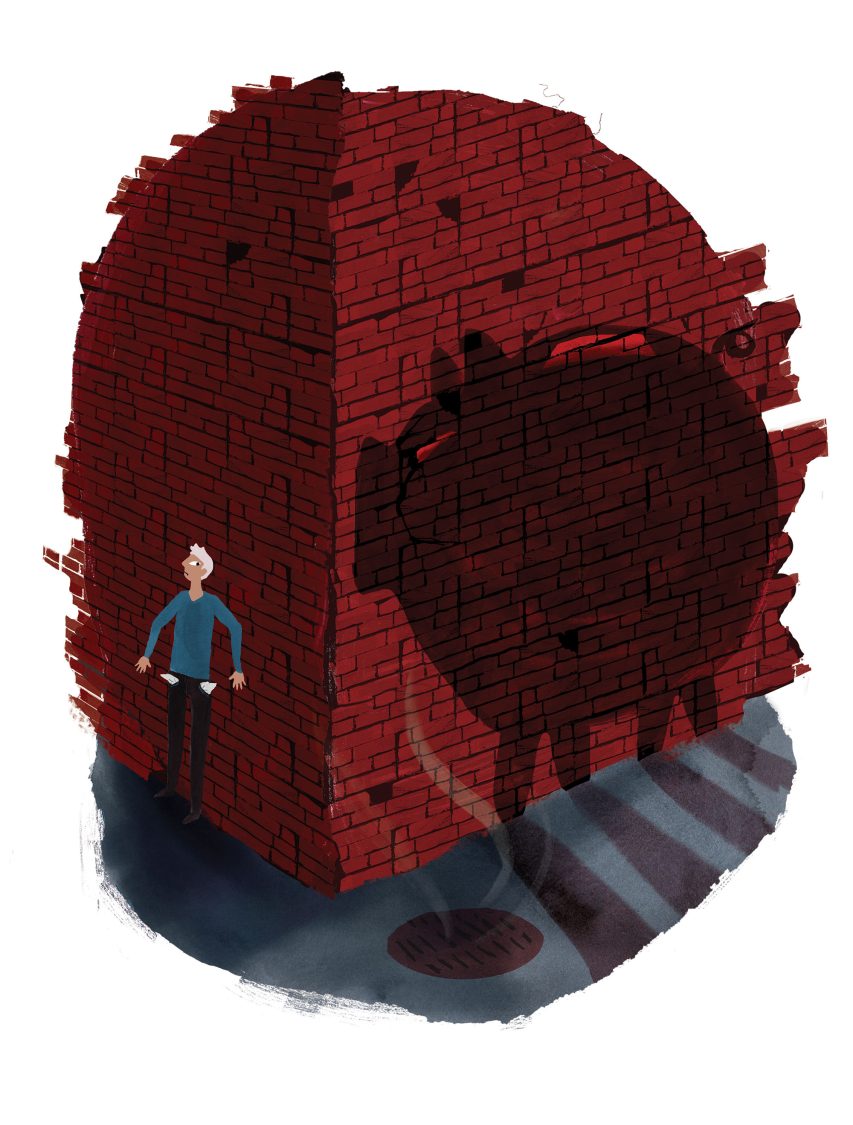At the close of a seven-day Zen retreat I attended many years ago, the Japanese teacher urged all of us to say something about our experience. A number of Americans stood up and described how transformative they found their many hours on the cushion. They spoke of inner barriers falling down and turning points in their life’s journey. An artist who had been immobilized by a creative block reported that ideas had come pouring out. But there was another group of attendees, Japanese and Japanese American, who responded quite differently. They thanked their families for supporting them and for taking care of business while they were away. They pledged to be more diligent on the job or more helpful to their communities.
Their words of thanks left me confused. Had I felt the same indebtedness to my own, conservative family, I might never have practiced Zen. Indeed, my parents tried to discourage me. And they were not the only ones. I can still recall the look of disbelief on the face of one of my professors when he learned that Zen was taking precious time away from my Ph.D. research. Choosing Zen meant saying no to them. But the remarks of the Japanese troubled me for another reason. Growing up with the struggle for civil rights, the campaign to end the war in Vietnam, and the feminist movement, I had seen how the pressure to conform out of a sense of social obligation could stifle dissent and halt progressive change.

It seemed obvious to me that the Japanese had lost touch with the true spirit of the dharma. They had forgotten that the Buddha disobeyed his father by refusing to become the leader of the Shakya people. He abandoned his loving wife and infant son. He ridiculed the holy scriptures and the rituals of the priestly caste. Warmly embraced by two of the most revered meditation teachers of the day, he turned his back on both of them. After taking up with five other outsiders who were determined to liberate themselves, the Buddha eventually abandoned them, too. When he finally had his great awakening, he was completely alone. The Buddha had become the world’s first real individual. Freeing himself from the power of the “they,” he taught others to do the same.
If this is true, though, what are we to make of the Buddha’s criticism of the selfishness of the “I-and-mine” state of mind or the Diamond Sutra’s rejection of any “isolated individuality”? Perhaps there was more to the dharma than I had been prepared to understand. Zen and other schools of Buddhist meditation first put down Western roots, after all, during the prosperous post–World War II years, when many disenfranchised groups were organizing for their inclusion in the Great Society. Gaining a place at the table meant insisting on their right to be different. But that strategy may no longer work in the atomizing Uber economy, where we are all increasingly forced to go it alone. No one has a place at the table anymore, since the table itself has disappeared.
In hindsight, the Japanese at that retreat look much less naive than I had believed. They approached solitary practice as a way of strengthening their social ties, not dissolving them, because they had learned from their history how fragile all such ties can be. As for the Buddha, he might indeed have been the first individual, but he also viewed individualism as a problem urgently needing to be solved. His solution? Generosity.
Like us, he lived in a complicated time. Men and women were migrating to cities like prosperous Vesali (Skt., Vaishali), where many of the Buddha’s patrons lived, or Savatthi (Skt., Shravasti), where he sheltered from the winter rains and delivered many of his teachings. These newcomers must have felt a sense of limitless possibility, but the world they encountered also posed unimagined challenges. With the disappearance of their old way of life, what would take its place? One answer was: the marketplace. And that created terrible problems.
Anyone who imagines Buddhist India as a nonmaterialist spiritual culture will be swiftly disabused of that vision by a compendium of second-century tales known as the Divyavadana. Tale after tale in the collection describes merchants undergoing harrowing ordeals—including bandits, ghosts, and wild beasts who threaten to tear them limb from limb—in their quest for riches. For a work of fiction written to provide moral guidance to the average Buddhist on the street, the Divyavadana is surprisingly concerned about wealth: how to get it, how to lose it, and how to find more. This focus tells us a great deal about some of the groups attracted to the dharma at the time: upwardly aspiring artisans, merchants, and professionals, like our middle class in the United States. And like us, the Divyavadana’s characters often try to walk a middle way between too much and not enough. They have to face the chronic insecurity we know all too well, constantly pressured by finances to put their success—or their survival—ahead of the well-being of others.

Markets feel liberating—at first. If you go to a drugstore to buy laxatives, dyes for your gray hair, or bikini wax, you don’t have to care what other customers think. The cashier probably won’t even look up, because the exchange of money for your purchases has nothing to do with who you are, whom you know, or where you were born. Exchange had this same power in the Buddha’s time. New arrivals to Vaishali brought with them the status markers that had once held them down: low-ranking clan and family names, rural dialects, and “backward” customs. Now the magic solvent of the market made it possible for them to leave behind old roles and invent new identities their own parents might not have recognized. For them, as for us, that mobility was all to the good.
But the market has its downside too, since its power to creatively destroy has no natural limits. And this is so because wealth obeys no commandment but “Thou shalt make more.” If women and children have to sleep in alleyways while able-bodied men stand on the street and beg, people of conscience may object, but the market doesn’t mind at all.
We can see the dharma as the Buddha’s response to this predicament. He never said, “The love of money is the root of all evil,” as the New Testament does. Indeed, the dharma’s rise coincided with an enormous economic boom, and some of the Buddha’s supporters had amassed their fortunes through trade. But the Buddha also recognized that the market would finally dissolve all social ties unless he could also offer an alternative.
The Buddha wanted to restore the spirit of community—the spirit of the family, village, and clan—although not by returning to the past. Because all things are impermanent, holding on was a losing strategy. But community itself could assume an entirely new form, one potentially without limits. The old sense of belonging had stopped at the border separating “them” from “us,” outsiders from insiders. The dharma encouraged people to regard the entire planet as their common home, and indeed not just a single planet but “countless Buddha worlds,” as the sutras say. But what rules should the members of this new cosmopolitan community observe? Not the Vedic laws still obeyed in the villages and not the calculus of the marketplace, either. Instead, the new rules were what the Buddha called paramis or paramitas, which we might translate as “perfections,” or forms of moral excellence: dana (generosity, giving of oneself to others); sila (virtue, morality, proper conduct); nekkhamma (nonattachment); panna (transcendental wisdom, insight); viriya (energy, diligence); khanti (patience, tolerance, forbearance); sacca (truthfulness, honesty); adhitthana (determination or resolve); metta (lovingkindness); upekkha (equanimity, serenity). Surely it was no accident that dana—giving, generosity—is the first of the paramis and the foundation of all the rest. As an ethical principle, dana urges people to regard their own happiness as unattainable unless they also look out for others.
But it’s one thing to praise generosity and quite another thing for the paramis to survive amid the cutthroat struggle for wealth. Making the paramis real called for something more enduring than an idea. To keep the spirit of dana alive, the Buddha interposed the monastic sangha between the market and the society.
The sangha played a special mediating role. While many of the Buddha’s lay followers had left their rural homes behind, monks and nuns were the ultimate “home leavers.” The ordination ceremony symbolized the cutting of all ties with the past. Monks and nuns relinquished their family names and broke with clan or caste identities. But unlike householders, the monastic sangha stood outside the market’s reach. The Vinaya allowed them no possessions but their robes, a waistband, a begging bowl, a razor, and a sieve to strain their drinking water. The precepts went so far as to prohibit them from even touching money.
The Buddha said the “dust” of ordinary life often clouded the householders’ sight. But the community of monks and nuns, following a different form of life, could show that the wealth and status people coveted were fleeting and illusory. A spacious house, a big, soft bed, a steady diet of delicious food—real joy required none of these. This is the joy Shantideva celebrates in The Bodhisattva’s Way of Life:
The fortunate ones stroll in peaceful forests,
Devoid of disputes and disturbing conceptions. . . .
Thinking of what is of benefit for others.
They dwell for as long as they wish
In empty houses, at the feet of trees and in caves,
Having abandoned the pain of clinging to and guarding (possessions),
They abide independent, free of care,
Living as they choose, desireless,
Having no ties with anyone—
Even the powerful have difficulty finding
A life as happy and content as this.
–Trans. Stephen Batchelor
Now, after more than a thousand years, readers can still be deeply moved by Shantideva’s words.

Abiding “free of care” with “no ties to anyone”—all of that sounds wonderful. But we might rush past another line: “Thinking of what is of benefit for others.” The freedom enjoyed by the monks and nuns is not the independence we modern individualists have been taught to revere. It’s actually a form of indebtedness, and the sangha itself was created to show that a spirit of indebtedness is the best antidote to the market.
Householders were expected to support the sangha with offerings of food, medicine, clothes and other necessities. For husbands and wives with mouths to feed and homes and livelihoods to maintain, giving always meant less for themselves and their children. But the monks and nuns had to sacrifice too, often through great austerity. Even Shantideva had to struggle at times with a sense of deprivation. The bond between the sangha and the householders, then, required generosity from both. Each side stood perpetually in the other’s debt.
None of us wants to be in debt, and many young people now owe so much on college loans they can barely pay their rent, let alone buy a car or own a house. Interest payments eat away at the funds their parents have set aside for retirement. But the desire to escape from debt, which seems perfectly natural at first glance, might reveal the way the market has turned our thinking upside down. The problem, I would say, is not indebtedness itself. The problem is that most of us are swamped by debt while a tiny minority have piled up the major share of the planet’s wealth.
In traditional societies like the villages early Buddhists left behind, everyone was so indebted to everyone else that it created an equilibrium based on reciprocity. Mutual dependency fostered mutual care. The Buddha’s challenge was to preserve that sense of reciprocity when connections had become so complex that most people never noticed them at all. The sangha-householder relationship placed mutual indebtedness right at the center of social life. The laity provided the monastic sangha with material support; the sangha provided lay folk with spiritual guidance and moral education. And the Buddha took an additional step by making this reciprocity extend still further: it was said to determine one’s ultimate fate through the workings of karma, a symbol of our unobserved connectedness.
Consider the Divyavadana, which often seems to equate good karma with financial success. In its pages, merit and money can appear to operate in perfect parallel. But it’s also true that many businessmen are portrayed as petty and conspiratorial. Most of them scheme to increase their wealth by putting others in their debt. The real heroes of the Divyavadana are the noble few who recognize that all of us lose in the long run when we play by money’s rules. One of the tales in the collection involves a merchant named Shrona Kotikarna, whose hard work and discernment bring him untold riches at the end of a caravan journey. Instead of enjoying the fruits of his wealth, Kotikarna gives his money away and becomes a penniless monk, completely dependent on others. Far from escaping indebtedness, he uses debt to strengthen his community, meeting the Buddha face-to-face and attaining arhatship. The moral of the story is that all of us owe an unrepayable amount, a karmic indebtedness that stretches back into the remotest past and intersects with countless people’s lives.
Descriptions of karma do sometimes sound like financial transactions. Karma can be gained and lost, and even transferred, or so many Buddhists believe. But as the story of Kotikarna illustrates, karma puts the market in its proper place as a form of upaya, “skillful means,” a liberating contrivance. It assumes that money’s power should be contained within a larger sphere of value that is mindful of the real bottom line—the liberation of all sentient beings. The market should enrich our common life, not the other way around.
Regrettably, the Kotikarnas in our time are few and far between. Most wealthy people don’t give away their enormous fortunes. They see human relations in financial terms, and many of them regard inequality as just and fair. Increasingly, people around the world think along these lines. In the United States today nearly every aspect of social life has been financialized. Schools, the arts, even our National Parks all get measured by returns on investment. We could try to defend institutions like these by using the language of finance. We could say, “Colleges make us more competitive. Poetry sparks innovation.” But this approach would only make the situation worse by ignoring real alternatives to the market mind-set.
The dharma pursues a different strategy. In the Lotus Sutra, the World-Honored One explains to the bodhisattva Manjushri that enlightened people work day and night to devise new strategies to help other people awaken. Even so, innumerable human beings still remain trapped in samsara. To reach them, the Buddha offers up what he describes as his ultimate teaching:
“All of you will be able to achieve the Buddha way.”
The reason I never said this [before]
Was that the time was not yet ripe.
But now is the right time.
–Trans. Gene Reeves
Some Buddhists believe this “now” marks a real turning point in human history, the moment of supreme revelation. But Zen tradition would argue that the “now” has been present all along because it is actually timeless. And in this timeless, eternal “now” there can be no reckoning of gain and loss. Here the logic of the market simply doesn’t apply. No longer an achievement for some future date, “awakening” gets reinterpreted as our intrinsic nature, buddhahood. Whatever role we happen to play as we travel from life to life, we are forever fundamentally this. Indeed, the Lotus Sutra compares buddhahood to an inheritance we have always possessed even if we have seen ourselves as living in abject poverty. And because of this inheritance, we have the capacity to help everyone else in some way. The Lotus represents this boundless generosity as the purest expression of enlightenment itself—buddhahood in action.
The vision of the Lotus is majestic, to be sure, and indeed, the generosity it celebrates is a quality of the Buddha: no Buddhist would expect anything less from the World-Honored One. But how can we imagine we could ever be generous like that: boundlessly, selflessly, without a whiff of judgment or blame? Everywhere we look in the actual world, we see people who are quite the opposite. Such generosity seems far removed from ordinary mortals.
Perhaps, though, we’re mistaken. Zen tradition says that when we think this way, we’ve misunderstood who we really are. The following koan from the 13th-century collection Wudeng Huiyan (Compendium of Five Lamps) points to what we’ve probably missed:
Master Zuzheng addressed the monks saying, “In the myriad forms, a Single Body is revealed. Where is this Single Body right now?” When no one could answer, he then raised his whisk and said, “Traveling the realm, crossing many riverbanks and mountains.”
–Trans. Andrew Ferguson
Anyone familiar with monasteries knows that monks and nuns may aspire to enlightenment, but most of them haven’t gotten there yet. All of the narcissism, insecurity, fear, and aggression we find outside the monastery turns up inside, too. Instead of listening closely to Zuzheng’s words, Brother Lu might have been picturing himself on the Master’s dais at some future time, the object of everybody’s reverence. Brother Xiao might have felt envious of Brother Feng, who had just received some kind of special recognition. Still another monk might have been lost in thought, hatching a plan to hide some food up his sleeve so he could sneak it back to his room where he wouldn’t have to share.
Nobody in the dharma hall understood what Master Zuzheng was getting at, because the “Single Body,” like the ground beneath our feet, is something we never notice at all unless we lose our balance. But there has to be ground before we can stand. Before there is an “I,” there has to be a “we”—a Single Body prior to myriad things.
When you’re eating in a restaurant and you ask the person at the next table to please pass the salt, you’d be quite surprised if he shot back, “What’s in it for me?” The normal response would be to accept that the salt, for now, belongs to everyone. Parents don’t send their grown-up kids an itemized bill for the costs incurred in raising them. When earthquakes and hurricanes strike, people set aside the market’s rules and return to a rule that existed long ago in the small bands of hunter-gatherers from whom we all descend: “From each according to their abilities, to each according to their needs.” If we see profiteering in an emergency—someone selling bottled water at a scalper’s price when the town reservoir has gone dry—we feel a rush of outrage because such behavior clearly violates our sense of basic fairness. Zuzheng’s Single Body is who we really are—a “we” that includes everyone and everything.
The irony of our current way of life is that it makes into competitors the very people whose companionship we would naturally enjoy. But Zuzheng presses his monks to understand that even their worst moments of selfishness arise from the very opposite—a desire to return to the “we.” I may want to be rich, creative, sexy, smart, but these are only gambits to attract the caring attention of others. “Traveling the realm, crossing many riverbanks and mountains”—no matter what we do or where we go, all of us are trying to regain our primal sense of connectedness.
The dimension of generosity is hidden in plain sight, yet we can overlook it even if we spend every waking hour in a temple. Perhaps as a way of reminding us, Buddhist ceremonies often end with an invocation or, if you’d prefer, a prayer: “May all beings find happiness.” We might have heard these words many times, but how often have we stopped to ask what they mean? To recite them is to wish for everyone the happiness we desire for ourselves. Even more radically, the prayer affirms that everyone deserves it. And this, I realize now, is what the Japanese were trying to communicate at that long-ago retreat. We haven’t found buddhanature in ourselves until we see it as our common property.
Thank you for subscribing to Tricycle! As a nonprofit, we depend on readers like you to keep Buddhist teachings and practices widely available.
